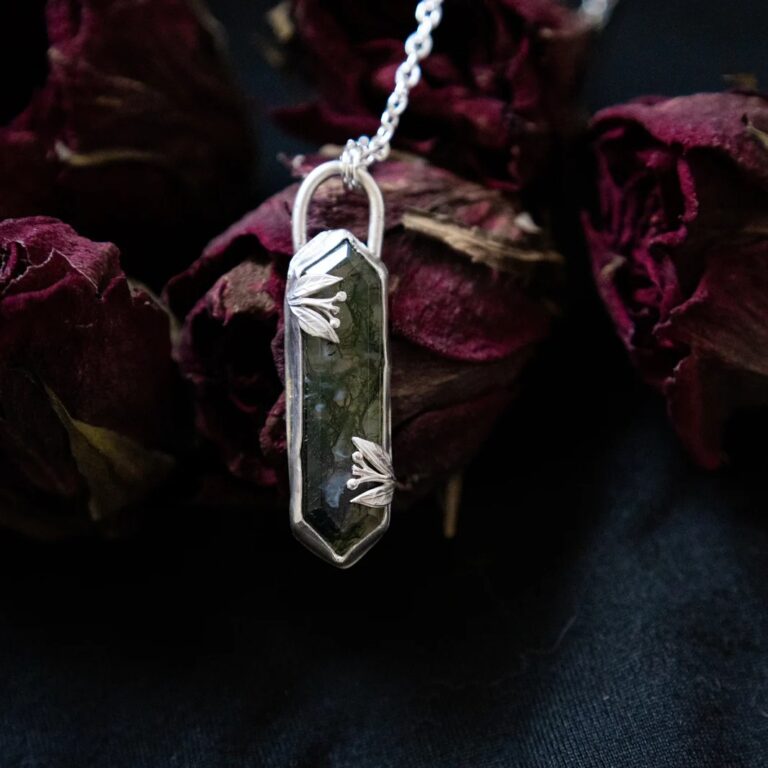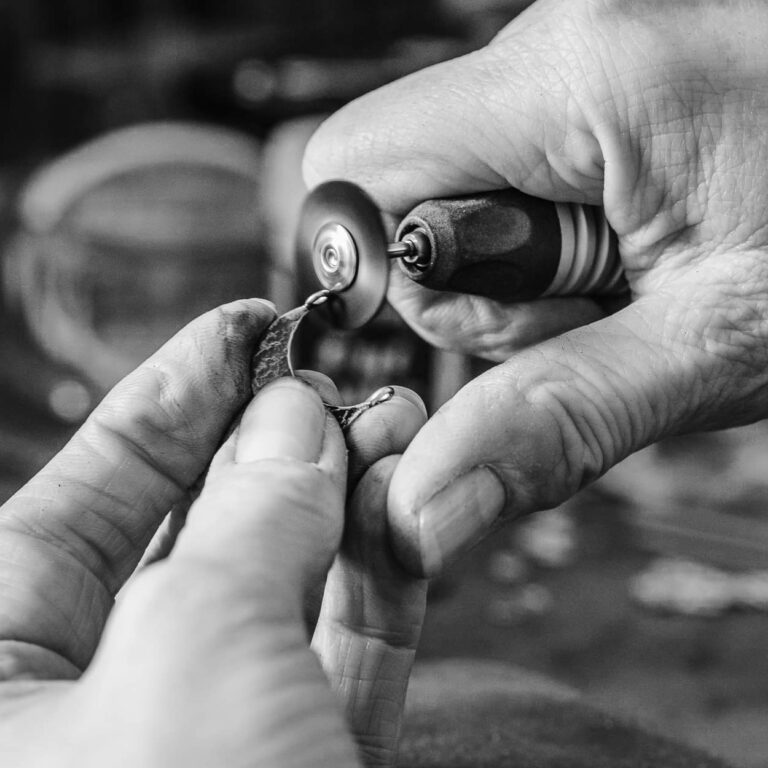
Storms & Saint
A story of jewellery inspired by contrasts.
FOUNDER STORIES
In a characterful studio tucked under a Manchester railway arch, Sam Andrew spends his days surrounded by clay, colour, and the gentle hum of the trains.
His work invites experimentation, honours material, and reflects a quiet fascination with how we see and interpret the world.
I’ve lived abroad in The Netherlands, Hungary and Tokyo, and was training to be a neuropsychologist. I’ve made pottery since I was a young child, as my mother studied it formally under some of the top British potters in the country.
On returning to Manchester, and working in research, I went to my mum’s pottery studio and got totally hooked in the making process. I then went on to spend every spare hour engrossed in throwing clay on the potter’s wheel.
I initially wondered how I could be a potter and a psychologist. However I realised I’d need to put myself fully into only one, and I chose pottery.
It’s just me who run’s the Sam Andrew brand, but I also run the pottery teaching and community studio, Seven Limes Pottery, setup by my mum over 25 years ago.
It delivers enthusiastic pottery classes in Manchester focusing on good craftsmanship and a welcoming environment. We have a few other tutors helping make it very welcoming and run smoothly.
The Seven Limes Pottery studio was first started in my mum’s garage, where me and my friends, as kids, were all taught by my mum in small classes. We engaged in many creative projects such as making monsters, fantasy houses and ocarinas.
The studio moved to a small industrial unit in Moss Side in Manchester for 18 years, and as of December last year we moved under a railway arch just outside the city centre with a 4 meter high shutter door.
With the humming of trains above, and the clicking of the kilns, it’s a characterful and spacious studio that really is a calm and pleasurable place to make. With its red brick arches, it does feel very Manchester.
There’s evening classes running every day and during the daytime there’s space for me to continue my making projects, which recently included sending off 100 nerikomi bowls to New York, making restaurant tableware, and remaking sculptural bricks to restore a Georgian building in Manchester.
As a psychologist I was interested in the optical phenomena of oscillating depth that comes with the perception of looking at lines. I love that it shows us we cannot really see the true real world, only a construct by our mind, which may be very different from one person to the next.
Despite this, our egos still strongly tell us that what we think is correct, but there are always many viewpoints.
This was a starting point for my ceramic work. I’ve studied lines as decorative effects on my pots right from the beginning. Painting them with coloured clay on the wheel and now layering different coloured clays to create loaves. These loaves are sliced and their slabs pressed into distinctive functional bowls and plates, with the striated lines sometimes being uniform, and sometimes veering showing the movement of the clay.
I also have a keen interest in reusing materials and the idea of sustainability. It was actually experiments using off-cast clay that I developed the layering technique and my nerikomi work evolved from this.
I keep all the off-cuts of the making process too, which have lines permeating through them. I use these to create other tableware pieces, and larger sculptural pots. They are entirely made of waste clay and result in excessive patterns. I’ve also crushed failed ceramic works and blended them with clay recycled from offcuts, and thrown tableware with them, creating pieces entirely made from waste clay.
Then the last few years I’ve been studying colour, including developing clays and glazes. These colour studies have resulted in bolder and brighter sculptural pots, which are yet to be exhibited.
You can’t be a ceramicist if you don’t get used to failure. It’s a labour of love and things do go wrong. From whole kiln loads of pots cracking in half to pots wrapping into unappealing shapes, I now thoroughly test my processes. Pieces will still warp, and sometimes it’s a case of accepting that reality.
Quite some time ago I remember retrieving one of my first sculptural pots from the kiln, it was black and white made using off-cuts. It was ugly. I banished it to the corner of the studio. It remained there for 2 years until I came across it again. I picked it up and it was beautiful. I went on to sell it for over £200, which was the highest amount I’d sold a pot for at the time.
The lesson goes back to our perceptual lens from which we view the world. Sometimes time helps it change.
While my nerikomi bowls are stocked in London and New York, and a select few on my own website along with recycled clay mugs and lidded jars, when we moved to the railway arch we acquired a larger kiln than we’ve had before. So in the future we may see some big brightly coloured sculptural artworks, with excessive patterns, reusing nerikomi off-cuts.
I’m also slowly chipping away at developing a thrown tableware range. As it’s been made using off-cuts, which there is a limited supply of, I’m working out a way I can more easily and consistently produce these.

Thank you to Sam for sharing your story and giving us a glimpse into life at the studio. I love the many layers in your work, both in form and meaning, and couldn’t help but think of fine, folded pastry when reading about your nerikomi loaves. It’s such a joy to see where your curiosity and craftsmanship are taking you next.
Lyndsey, Editor
Do you have a founder story to share? We’d love to hear from you.
Submit your website and we’ll be in touch.

A story of jewellery inspired by contrasts.

A story of returning to what matters and making space to create again.
ADVERTISEMENTS
MAY contain affiliate links
FEATURED BRANDS
In Partnership with The Artisan Founder